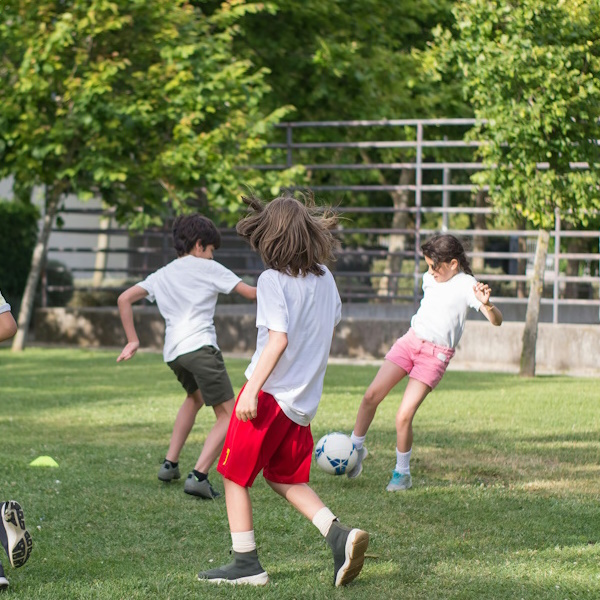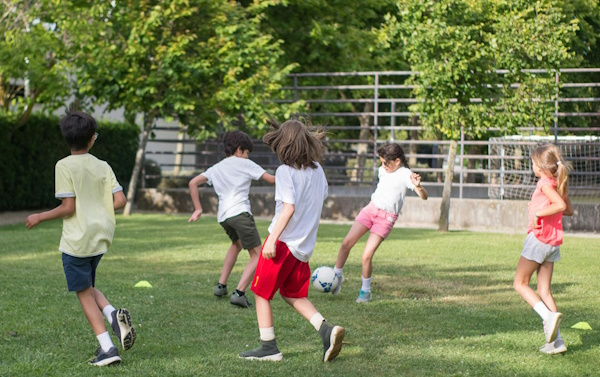Fuel Your Active Kids: Mastering Meal Planning for Energy & Health
Meal planning for active kids isn't just about filling their plates; it's about fueling their day. You're not just a parent; you're the pit crew for your little athlete, ensuring they have the energy to run, jump, and play. It's a balancing act of nutrition, variety, and appeal—making sure every meal packs a punch to support their active lifestyle.
Understanding the basics of meal planning for your energetic youngsters can transform mealtime from a stress point to a highlight of the day. With the right strategies, you'll not only keep them moving but also instill healthy eating habits that last a lifetime. Let's dive into how you can become the meal planning champion your active kids need.
Benefits of Meal Planning for Active Kids
When you dive into meal planning for your active children, you're not just filling their plates with food, you're strategically fueling their busy days. Proper nutrition is key in providing the energy they need to thrive both physically and mentally. Let's explore the myriad benefits that meal planning brings to the table.
Firstly, meal planning ensures that your kids are getting a balanced diet. This means they'll receive the right proportions of carbohydrates, proteins, fats, vitamins, and minerals necessary for their growth and energy levels. When you plan, you can ensure each meal is a mix of macro and micronutrients that support their development and active lifestyle.
Secondly, it introduces variety into their diet. It's easy to fall into the trap of serving the same meals over and over, but meal planning encourages you to think ahead and include a range of foods. This not only combats boredom but also ensures a wider range of nutrients, fostering a lifelong appreciation for different foods.
Another key benefit is the time and money saved. Planning meals in advance can significantly reduce the number of trips you make to the grocery store, minimize food waste, and allow you to buy in bulk, which often leads to cost savings. Furthermore, with meals planned out, you're less likely to opt for last-minute, less nutritious fast-food options, thus investing in your child's health and your wallet.
Lastly, meal planning can create a positive family dynamic. Involving your kids in the meal planning process can teach them valuable lessons about nutrition, meal preparation, and the importance of a balanced diet. It's an opportunity for them to feel heard and to take ownership of their health, encouraging healthy eating habits that can last a lifetime.
By recognizing the benefits of meal planning for active kids, you're not just ensuring they have the energy for their activities; you're also setting the foundation for healthy lifestyle choices they'll carry into adulthood.
Understanding Nutritional Needs for Active Kids
When it comes to meal planning for your active kids, understanding their nutritional needs is crucial. Active kids burn more calories than their less-active peers, so their diets require careful consideration to not only replenish their energy but also to support healthy growth and development. The key lies in focusing on a diet rich in proteins, carbohydrates, healthy fats, vitamins, and minerals.
Proteins are the building blocks of muscle and are essential for growth. Aim to include a source of lean protein in every meal, whether it's from animal sources like chicken, fish, and eggs, or plant-based sources like beans, legumes, and nuts.
Carbohydrates are the primary source of energy for active kids. However, it's important to differentiate between simple carbohydrates, found in sweets and processed foods, which provide a quick energy spike followed by a crash, and complex carbohydrates, found in whole grains, fruits, and vegetables, which offer sustained energy release. Opt for complex carbohydrates to keep your child's energy levels stable throughout the day.
Healthy fats are crucial for brain health and energy. Sources like avocados, nuts, seeds, and fish provide the necessary fats your child needs to stay active and focused.
Finally, don't overlook the importance of vitamins and minerals. Calcium and vitamin D are essential for strong bones, especially for children involved in sports or physical activities. Iron, found in lean meats and spinach, helps carry oxygen to muscles, improving endurance and performance.
Balancing these nutrients doesn't have to be a chore. By incorporating a variety of foods into your meal plan, you can ensure your active child receives all the nutrients they need to thrive without getting bored of the same meals. Remember, variety is not just the spice of life; it's also a cornerstone of a nutritious diet for active kids.
Building a Balanced Meal Plan
When it comes to meal planning for active kids, finding the right balance is key. You're aiming for a mix that supports their energy levels, growth, and overall health. It's not just about picking the right ingredients but about understanding how they come together to fuel your child's active lifestyle.
Start with proteins, fundamental for muscle repair and growth. Include lean meats, poultry, fish, eggs, and plant-based sources like beans and lentils. Aim for a variety of sources throughout the week to keep meals interesting and nutritious.
Carbohydrates are your child's main energy source. Opt for whole grains like brown rice, quinoa, and whole wheat pasta, which provide sustained energy release, rather than quick spikes. Include a healthy portion at each meal to ensure they have the fuel they need for all their activities.
Do not forget about healthy fats, essential for brain health and energy. Avocados, nuts, seeds, and olive oil are great choices. These should be part of the meal plan, in moderation, to support overall health without contributing to unnecessary weight gain.
Incorporating a colorful variety of fruits and vegetables ensures they're getting a wide range of vitamins and minerals. Aim for at least five portions a day to support their immune system, growth, and hydration.
| Nutrient | Sources | Benefits |
|---|---|---|
| Protein | Lean meats, poultry, fish, beans, lentils | Muscle repair, growth |
| Carbohydrates | Whole grains, quinoa, whole wheat pasta | Sustained energy release |
| Healthy Fats | Avocados, nuts, seeds, olive oil | Brain health, energy |
| Vitamins & Minerals | Fruits, vegetables | Immune system support, growth, hydration |
By focusing on these key components, you can create a balanced and diverse meal plan that keeps up with your active kids' nutritional needs. Remember, variety is not just the spice of life but the foundation of a healthy diet for energetic youngsters.
Incorporating Variety and Appeal into Meals
Keeping meals interesting is essential when planning for active kids. You already know the nutritional groundwork, but how do you ensure your kids are excited come mealtime? Variety and appeal are your secret ingredients. By mixing up the foods you serve, you can keep your little athlete both engaged and nourished.
First off, don't shy away from introducing new foods alongside familiar favorites. A good balance between new and known encourages your kids to be adventurous eaters while still providing them with the comfort of their go-to meals. Think of adding a new vegetable to a beloved pasta dish or a unique fruit to their cereal. This gradual introduction expands their palate and nutritional profile without overwhelming them.
When it comes to appeal, consider the visual and textural aspects of the meals. Kids eat with their eyes first; bright colors and fun shapes can make a plate more inviting. Use cookie cutters to create interesting shapes out of fruits, vegetables, or sandwiches. Similarly, a variety of textures—crunchy, smooth, crispy—can make meals more engaging. A smoothie with a mix of textures from added nuts or granola can transform a simple drink into a more exciting meal option.
Incorporating theme nights is another great strategy to mix things up. Taco Tuesdays or Make-Your-Own-Pizza Fridays not only add a fun twist but also give kids something to look forward to each week. These nights can involve the kids in meal planning and preparation, further increasing their interest and investment in what they eat.
Lastly, never underestimate the power of presentation. A little effort in how the food is plated can go a long way. Arrange the meal in a pattern or use colorful plates and utensils. The goal is to make mealtime enjoyable and visually appealing, encouraging your child to dive in with enthusiasm.
By focusing on variety and appeal, you're not just feeding your active kids; you're also nurturing their curiosity and joy in eating. This approach can help foster a lifelong positive relationship with food, ensuring they not only eat what's on their plate but also enjoy and look forward to mealtime.
Strategies for Meal Prep and Convenient Meals
When it comes to feeding active kids, preparation is key. Meal prepping can save you a lot of time during the week and ensures that your kids have access to nutritious meals even on their busiest days. Here's how to master the art of meal prep for your energetic youngsters.
- Bulk Cooking: Dedicate a few hours during the weekend to cook meals in large quantities. Dishes like casseroles, soups, and stews are great for this because they're easy to make in big batches and freeze well. Divide these into individual portions and freeze them. On busy days, all you need to do is reheat a portion for a quick and nutritious meal.
- Pre-cut Veggies and Fruits: Spend a little time chopping vegetables and fruits and store them in the refrigerator. This makes it easy to quickly assemble salads, stir-fries, or snacks. Having these ready-to-go options encourages your kids to choose healthier snacks and helps in the quick preparation of meals.
- Use a Slow Cooker or Instant Pot: These appliances can be life-savers for busy parents. With minimal morning prep, you can have a healthy and hearty meal ready by dinner time. These tools are perfect for cooking lean meats, whole grains, and legumes, offering a variety of textures and flavors that appeal to kids.
Don't overlook the importance of involving your kids in the meal prep process. This not only teaches them valuable life skills but also helps them appreciate the effort that goes into preparing nutritious meals. Let them pick recipes, wash veggies, or even mix ingredients. This engagement can make them more excited about the meals and more likely to eat what's on their plate.
Incorporating convenient meals doesn't mean resorting to fast food. With a bit thought and preparation, you can ensure your active kids are fueled with wholesome meals that support their energy needs and taste preferences. By taking the time to prep in advance, you're setting up your week for success and ensuring that meal times are both stress-free and enjoyable.
Instilling Healthy Eating Habits for Life
When you're mapping out meals for your active kids, it's not just about the here and now. It's about laying the foundation for healthy eating habits that will stay with them for life. You're crafting not just a meal plan, but a mindset towards nutrition and wellness that will guide them long into their future.
Start early by involving your kids in the meal planning process. Take them shopping and let them pick out fruits, vegetables, and other healthy options. Engagement in selection makes kids more excited to eat what's on their plate because they had a hand in choosing it. This hands-on approach teaches them about different foods and nurtures their interest in nutrition.
Next, make mealtime a learning experience. Discuss where foods come from, their nutritional value, and how they fuel the body. Educating your children on the importance of what they eat and how it affects their energy levels and performance can motivate them to make healthier choices on their own.
Consistency is key. Stick to your healthy meal plans as much as possible but be flexible. Life happens, and sometimes you'll need to adjust. Showing your kids that it's possible to maintain healthy eating habits, even with a busy schedule, sets a realistic example they can follow. Balancing consistency with flexibility teaches them that while it's important to stick to healthy choices, it's okay to enjoy treats and special occasions without guilt.
Lastly, emphasize the joy of eating well. Celebrate the colors, flavors, and textures of food. Make mealtime enjoyable and avoid turning it into a lecture session. When kids associate positive feelings with healthy eating, they're more likely to continue these habits into adulthood.
Conclusion
Embracing the journey of meal planning for your active kids is more than just a daily task—it's a commitment to their health, energy, and happiness. By striking the right balance of nutrition, variety, and appeal, you're not only ensuring they're well-fueled for their activities but also instilling lifelong healthy eating habits. Remember, you're the key player in turning mealtime from a challenge into an enjoyable and enriching part of the day. With the right approach, every meal can be an opportunity to support your child's active lifestyle and pave the way for a future of positive food choices. So, take pride in your role as the ultimate support crew for your little athletes. Your efforts today are shaping their tomorrow.







